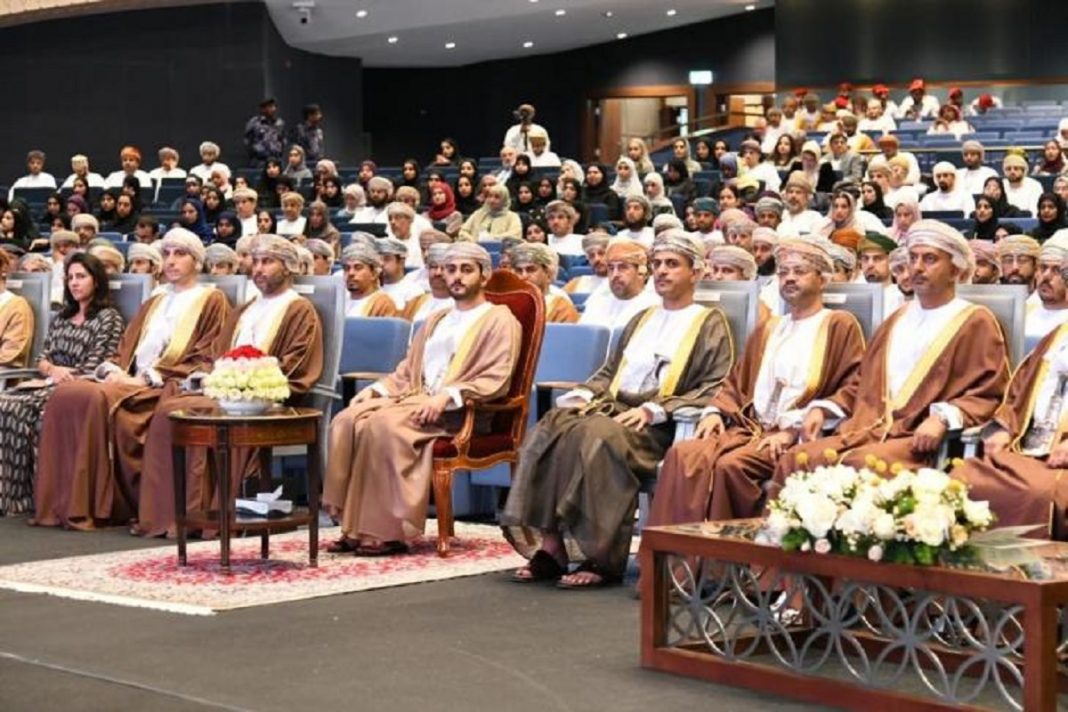Gabriel G Tabarani
Oman, with its rugged deserts, ancient “aflaj” irrigation systems, and sweeping coastlines, stands at a precarious intersection of geography, climate, and development. This small Gulf nation is no stranger to environmental extremes: arid terrain, searing heat, and scarce water have shaped its society for centuries. Yet today, climate change is intensifying these conditions, threatening to unravel the delicate balance between people, resources, and economy. For Oman, the climate crisis is not a distant abstraction but an immediate challenge to its sustainable future—and a test of its governance, resilience, and imagination.
The facts are stark. Most of Oman receives less than 100 millimeters of rain annually, and climate models project a 2°C to 4°C rise in average temperatures by 2050. These shifts will magnify droughts, heatwaves, and destructive cyclones, while sea-level rise menaces the coastal cities of Muscat and Salalah—where much of the country’s population and infrastructure are concentrated. Already among the most water-scarce countries in the world, Oman’s reliance on overdrawn aquifers and declining aflaj systems underscores the fragility of its water security. Agriculture, which accounts for only about 2 percent of GDP but supports rural livelihoods and food security, faces growing pressures from salinity, desertification, and unreliable rainfall.
Economically, the country’s vulnerability is compounded by its dependence on hydrocarbons. Oil and gas still dominate government revenues and exports, leaving Oman exposed both to volatile global energy markets and to the long-term decline in fossil fuel demand. Vision 2040, the national development plan, has spurred diversification toward services, industry, and emerging green technologies, but the transition remains incomplete. In this context, climate change is more than an environmental threat; it is an existential economic risk.
Yet Oman is not passive in the face of these challenges. It has laid out a framework of policies and strategies: an updated Nationally Determined Contribution under the Paris Agreement, a National Strategy for Adaptation and Mitigation to Climate Change, and a vision for a gradual shift toward net zero through renewables and green hydrogen. These plans reflect a recognition that resilience must be built across water, energy, agriculture, and urban infrastructure. The government has also sought to integrate climate considerations into broader development through royal decrees, ministerial decisions, and cross-sectoral coordination.
Still, ambition and execution remain uneven. Oman has committed to reducing greenhouse gas emissions by 21 percent from a business-as-usual scenario by 2030—an improvement over earlier pledges. But much of this target is conditional on international climate finance, technology transfer, and capacity-building. Ministries directly responsible for climate adaptation and mitigation remain underfunded, often overshadowed by subsidies for electricity and water. While emergency funds have improved disaster response following recent cyclones, long-term adaptation projects suffer from limited fiscal space and bureaucratic silos.
Moreover, the country’s climate governance reveals gaps in inclusivity and accountability. While transparency and oversight mechanisms exist, few institutional tools explicitly involve civil society or nongovernmental actors in shaping policy. Without broader participation, climate strategies risk becoming technocratic exercises that fail to address community needs—particularly in rural and coastal areas most exposed to climate impacts. Young Omanis, who represent a growing share of the population and face constrained job prospects, must also be meaningfully included in shaping the country’s green transition.
Oman’s stability and tradition of consensus-building give it a comparative advantage in navigating these turbulent waters. Unlike some neighbors, it has avoided political unrest and maintained a pragmatic foreign policy. But stability cannot be taken for granted in an era of mounting climate pressures. Water and food insecurity, combined with economic stagnation and unmet social expectations, could strain the social contract. A climate crisis that deepens inequality—between urban and rural, rich and poor, nationals and expatriates—poses not just an environmental challenge but a political one.
What, then, should Oman do to turn vulnerability into resilience? First, it must treat climate action not as a narrow environmental agenda but as the foundation of national development. Water management, sustainable agriculture, and coastal protection must receive equal priority to fiscal reform and infrastructure expansion. This means scaling up investment in modern irrigation, desalination technologies resilient to sea-level rise, and renewable energy systems that can relieve pressure on water-intensive fossil fuel plants.
Second, governance must become more participatory. Farmers, fishers, youth, and local communities should have a stronger voice in shaping adaptation measures, ensuring they reflect lived realities rather than top-down prescriptions. Civil society engagement will also strengthen accountability and mobilize the creativity needed to adapt to fast-changing conditions.
Third, Oman must harness its Vision 2040 framework to integrate climate goals into its economic diversification strategy. Green hydrogen, solar, and wind power offer pathways not only to decarbonization but also to new industries and employment opportunities for young Omanis. Linking these sectors with global markets could help reduce fiscal dependence on oil while positioning Oman as a hub in the emerging low-carbon economy.
Finally, international cooperation will be essential. Oman’s reliance on external financing for its climate commitments reflects both fiscal constraints and the global responsibility to support vulnerable states. By strengthening ties with multilateral institutions, climate funds, and technology partners, Oman can accelerate its transition while sharing lessons with other arid and hydrocarbon-dependent countries facing similar challenges.
Oman’s story is emblematic of a broader truth: the climate crisis is not confined to melting glaciers or distant rainforests but is already reshaping societies in the most water-stressed corners of the planet. The Sultanate’s ability to balance tradition and modernization, stability and reform, offers a foundation for resilience. But time is short. Without decisive action to embed climate resilience into every facet of its development, Oman risks watching its hard-won progress eroded by the unforgiving forces of nature.
The choice before Oman is clear: adapt boldly or be overtaken by the tide.
This article was originally published in Arabic on the Asswak Al-Arab website


